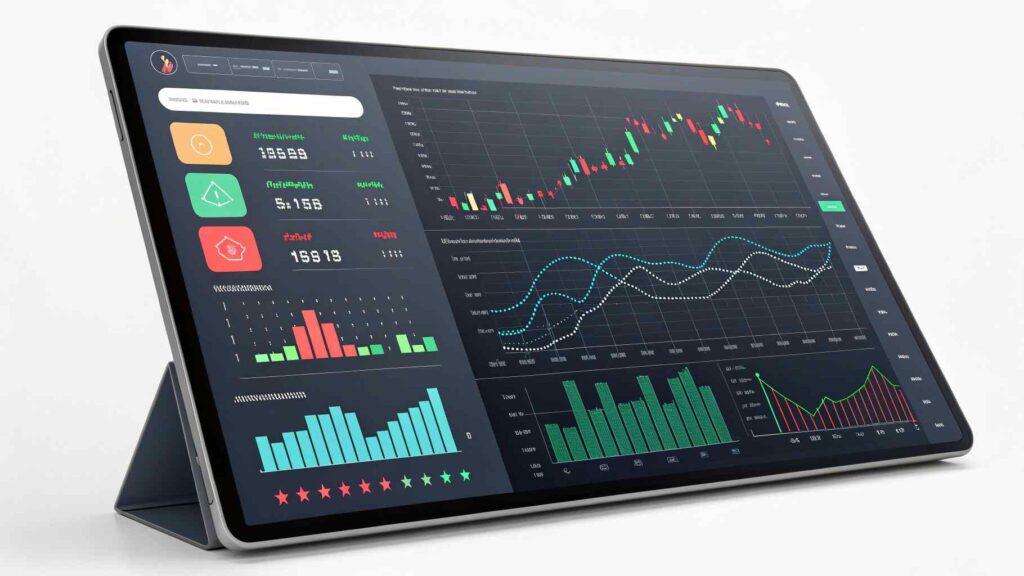Intraday trading, also called day trading, involves buying and selling financial instruments within the same trading day.
Traders focus on capitalizing on small price fluctuations without holding positions overnight. Unlike long-term investing, intraday trading requires quick decision-making, technical analysis, and discipline.
The goal is to generate consistent profits by leveraging price volatility. Market participants include retail traders, institutional investors, and high-frequency trading firms. Success in intraday trading depends on knowledge, strategy, and risk management.
Proper execution of trades, coupled with market insights, can enhance profitability. Understanding market structure, liquidity, and order execution plays a critical role in effective intraday trading.
Benefits and Risks of Intraday Trading:

Intraday trading offers both rewards and challenges. The primary advantage is quick profit potential since positions are closed within the same day. It eliminates overnight market risk, which is beneficial in volatile conditions.
Traders also gain access to margin and leverage, amplifying profit opportunities. However, risks include high volatility, emotional stress, and significant transaction costs. Novice traders often face challenges in maintaining discipline and risk control.
Slippage and liquidity issues can affect trade execution. Without a proper strategy, traders may experience substantial losses.
Understanding both the benefits and risks is crucial for developing an effective approach to intraday trading.
Essential Intraday Trading Strategies:
Successful intraday traders use specific strategies to identify profitable opportunities. Trend following involves trading in the direction of the prevailing trend, increasing the likelihood of success.
Scalping focuses on executing multiple small trades to capture minor price movements. Range trading identifies key support and resistance levels for buying and selling decisions.
Breakout trading capitalizes on price movements beyond significant levels, leading to momentum-based trades.
News-based trading leverages market reactions to economic releases, earnings reports, and geopolitical events.
Each strategy requires risk management, technical analysis, and experience. Selecting the right strategy depends on market conditions, trader expertise, and capital allocation.
Also Read:Zelldivgenstein – Artificial Intelligence and Zelldivgenstein!
Key Technical Indicators for Day Traders:

Technical indicators help traders analyze market conditions and execute informed decisions. Moving Averages smooth price fluctuations to identify trends.
The Relative Strength Index (RSI) determines overbought or oversold conditions, indicating potential reversals.
The Moving Average Convergence Divergence (MACD) measures trend momentum by comparing moving averages. Bollinger Bands track price volatility, providing entry and exit signals.
Volume indicators, such as On-Balance Volume (OBV), analyze buying and selling pressure. Fibonacci retracement helps identify key support and resistance levels.
Combining multiple indicators enhances decision-making. Understanding these indicators improves trade accuracy, leading to more profitable outcomes in intraday trading.
Developing a Solid Trading Plan:
A well-structured trading plan is essential for intraday success. It should include clear goals, defined risk tolerance, and precise entry and exit criteria.
A solid plan incorporates technical and fundamental analysis, ensuring informed decision-making.
Traders should establish position-sizing rules to manage capital effectively. A well-documented strategy allows traders to track performance, identify weaknesses, and refine approaches.
Trading psychology plays a vital role; maintaining discipline prevents impulsive decisions. Testing strategies through backtesting and paper trading improves consistency.
A robust trading plan provides direction, minimizes losses, and enhances profitability. Continuous learning and adaptability contribute to long-term intraday trading success.
Also Read:CK2GeneratorCom – The Ultimate Platform for Crusader Kings II Players!
Risk Management Techniques:

Risk management is crucial to preserving capital and sustaining profitability. Setting stop-loss orders limits potential losses by automatically closing positions at predetermined levels.
Position sizing determines the amount of capital allocated per trade, reducing exposure. Risk-reward ratios help traders evaluate trade viability, ensuring higher reward potential than risk taken.
Diversification prevents over-reliance on a single asset or sector. Avoiding overleveraging protects against amplified losses. Regularly reviewing and adjusting risk strategies enhances efficiency.
Maintaining a disciplined approach prevents emotional trading. Effective risk management ensures traders survive market fluctuations and achieve long-term consistency in intraday trading.
Psychological Aspects of Trading:
Trading psychology significantly impacts decision-making. Emotional control prevents impulsive trades driven by fear or greed. Developing patience allows traders to wait for optimal setups instead of forcing trades.
Confidence comes from experience, strategy refinement, and thorough analysis. Managing stress reduces performance pressure, improving focus. Overtrading, often caused by frustration or revenge trading, should be avoided.
Accepting losses as part of trading fosters resilience. Setting realistic expectations prevents disappointment.
Maintaining a positive mindset supports long-term success. Psychological discipline, combined with strong risk management and strategy execution, ensures consistent and profitable intraday trading outcomes.
Also Read:New in Potnovzascut – A Complete Guide to the Revolutionary Tourism Platform!
Tools and Platforms for Intraday Trading:

Choosing the right trading tools enhances efficiency. A reliable brokerage platform with fast order execution and low fees is essential. Advanced charting software provides real-time data for analysis.
Algorithmic trading tools automate strategies for efficiency. Real-time news feeds keep traders informed about market-moving events.
Economic calendars help anticipate volatility from financial releases. Mobile trading apps allow on-the-go monitoring.
Paper trading platforms enable practice without financial risk. Selecting appropriate tools enhances market analysis, execution speed, and risk management.
The right trading setup ensures a competitive edge in intraday markets, improving overall trading success.
Common Mistakes to Avoid in Intraday Trading:
Avoiding common pitfalls is crucial for successful trading. One major mistake is overtrading, which occurs when traders enter too many positions without proper analysis.
Ignoring risk management by not setting stop-loss orders can lead to significant losses. Emotional trading, such as panic selling or revenge trading, often results in poor decisions.
Neglecting technical analysis and trading based on gut feelings reduces accuracy. Overleveraging magnifies losses when trades go wrong.
Failing to adapt to changing market conditions can lead to missed opportunities. By recognizing and addressing these mistakes, traders can improve their performance and increase profitability.
Also Read:Nilfi48516 – Comparative Analysis!
Advanced Intraday Trading Tips for Consistent Profits:
Mastering intraday trading requires continuous improvement. Advanced traders refine their strategies using historical data and backtesting. Scalping techniques demand high-speed execution and quick decision-making.
Understanding liquidity levels helps traders enter and exit positions efficiently. Analyzing multiple timeframes provides a broader market perspective.
Using market depth tools assists in identifying buying and selling pressure. Diversifying trading strategies helps mitigate risks associated with a single approach.
Practicing disciplined trading habits, such as journaling trades and reviewing mistakes, fosters growth. By integrating these advanced techniques, traders can enhance their consistency and profitability in intraday trading.
How to Select the Best Stocks for Intraday Trading:
Stock selection is crucial for intraday success. Traders should focus on highly liquid stocks that offer better trade execution and tighter spreads.
Volatility is essential, as it provides price movements needed for profitability. Stocks with strong volume indicate increased trader participation, improving price predictability.
News catalysts such as earnings reports and economic data create trading opportunities. Monitoring pre-market activity helps identify potential winners for the day.
Using stock screeners to filter stocks based on volume, volatility, and technical indicators enhances selection efficiency.
Choosing the right stocks increases the likelihood of successful intraday trades and improves overall performance.
FAQ’s
1. What is intraday trading?
Intraday trading involves buying and selling financial instruments within the same trading day to capitalize on short-term price movements.
2. How much capital is required for intraday trading?
The required capital varies but typically starts from $500 to $5,000, depending on broker requirements and risk tolerance.
3. Is intraday trading profitable?
Yes, but it requires discipline, strategy, risk management, and experience to consistently generate profits.
4. What are the best stocks for intraday trading?
Highly liquid and volatile stocks with strong volume and market trends are ideal for intraday trading.
5. How to minimize risk in intraday trading?
Using stop-loss orders, position sizing, and risk-reward ratios can help manage risk effectively.
Conclusion:
Intraday trading offers lucrative opportunities for those who master strategy, risk management, and discipline.
By applying the right techniques and continuously improving skills, traders can enhance their profitability and long-term success in the market.
Also Read:





